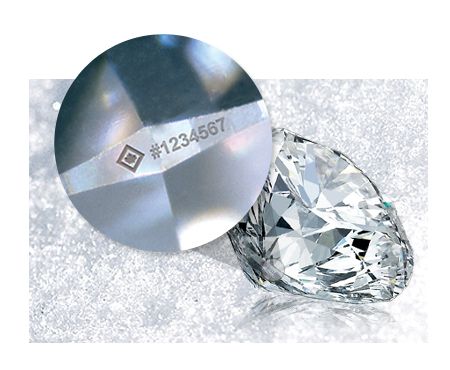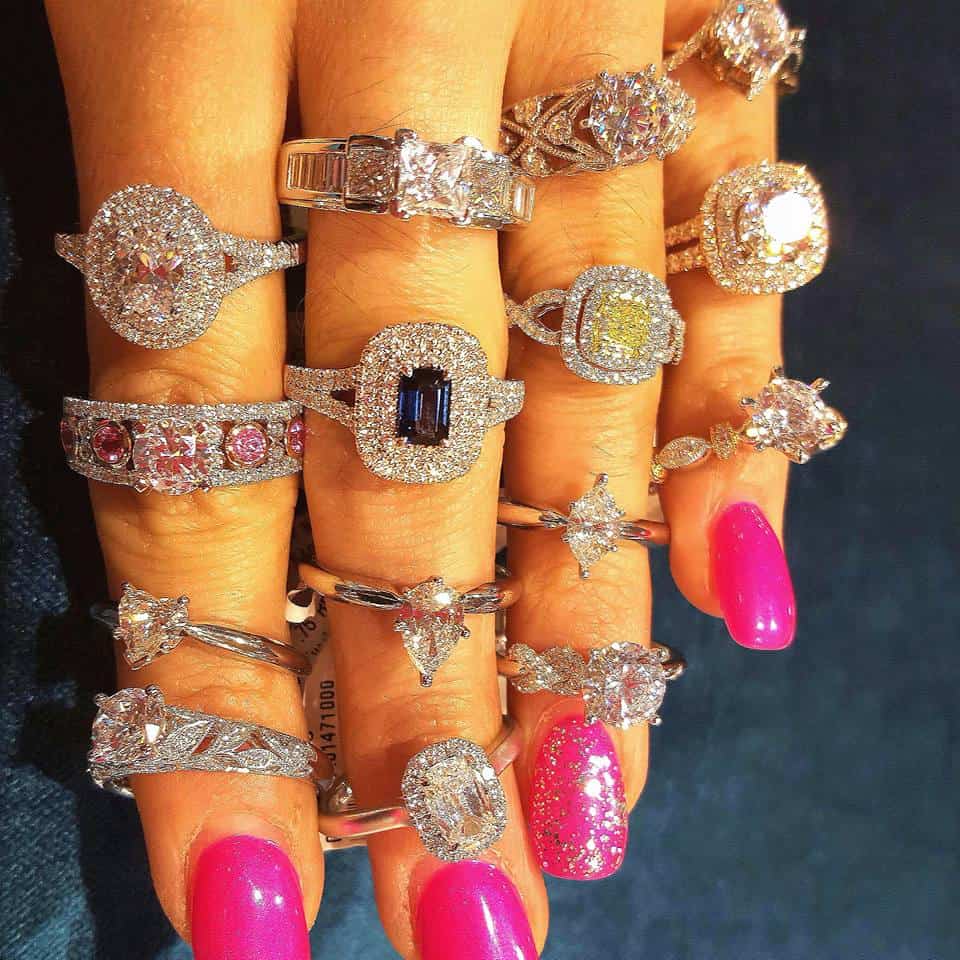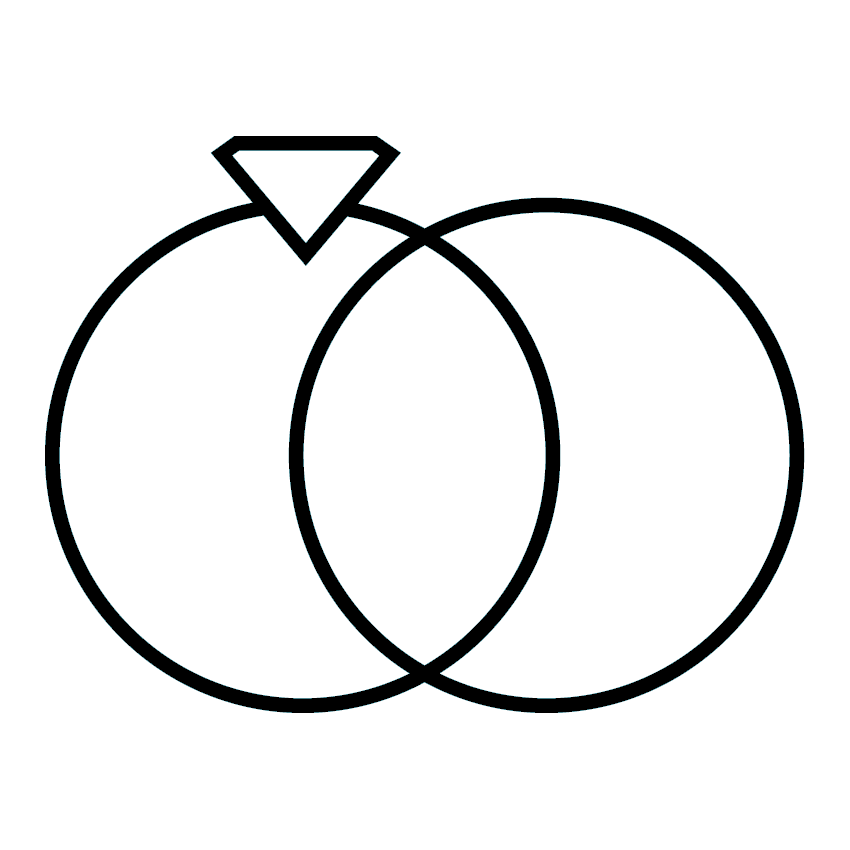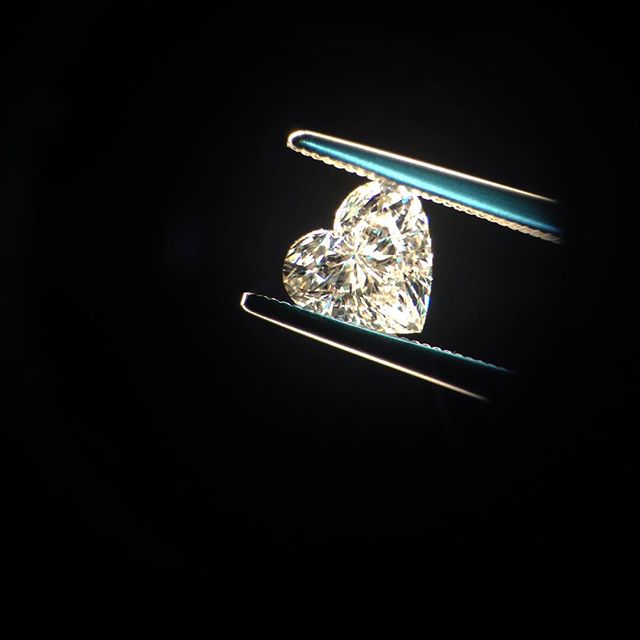So, you want to find the perfect diamond but don’t have time to take a yearlong course at GIA? Join the crowd! I have the privilege of working in a Customer Care Center and speaking with people of all walks, ages and situations that are looking to buy the perfect diamond. Over my many years of helping clients, I’ve learned that sometimes jewelers can confuse shoppers about the diamond-buying process. In an effort to help simplify things, I’ve taken the two most misunderstood grading categories of the 4C’s, Cut and Clarity, and have broken them down to what you really need to know.
CUT
Technically, Cut is how jewelers refer to the make of the diamond. Cut is made up of many things found on a certificate and even more things that aren’t. What you really need to know though is that the cut of the diamond is what gives the diamond its personality. So how does a diamond get its personality?

Proportions
When a diamond is cut shallow (think of a scone), she will have less light return since most of the light coming in the top will leak out of the bottom of the diamond. She may still be beautiful and might even look larger than other diamonds, but will require more cleaning to maintain her beauty and may have a milky appearance.
Now the reverse of this would be if the diamond was cut too deep (think of an ice cream cone). When this happens she becomes darker with less sparkle since most of the light is leaking from the sides of the diamond. In extreme situations she may become very dark and lifeless. When the diamond has the right cut however, she will shine and sparkle with intense life. It’s important to know that every diamond reacts to its cut differently, and a master cutter will know the perfect way to fashion the diamond to give her the most personality possible. The key here is to understand that diamonds can’t all be cut the same and have the same reaction; which is why it is so important to see the diamond in person to know that she is the one.
Polish and Symmetry
So what is polish and symmetry? Let’s talk about polish first. Polish refers to how smooth each cut or facet of the diamond is. Think about a black car that has just been waxed. If it is done well, you will see a mirror-like shine from the paint, but if not you will see swirl marks from the buffing wheel. What does this mean for you? Well, the better the polish, the more sparkle your diamond will have. Most hand selected diamonds will have good polish or better to ensure she has a brilliant shine.
Symmetry refers to how balanced the cuts are. If you cut the diamond in half, will both sides look identical? This is such an important part of a diamond’s light return. Think of each cut, or facet, of the diamond as a mirror designed to bounce the light that comes in the top of the diamond back out to your eye. Imagine how much more sparkle she will have if her facets are perfectly aligned. Any light coming in the top will hit a mirror, bounce to another mirror and then back out the top.
CLARITY
The second of the 4C’s that we get asked about all the time is Clarity. Clarity is all about describing what is inside of the diamond itself. Every diamond has tiny markings when it’s formed. These markings are made up of other crystals being trapped, small pinpoints, internal cracks and even markings on the surface. How large these markings are or where they are located is how the clarity grade is determined. Regardless of the clarity you choose, you will want to get to know where the markings are located in your diamond and why you are paying what you are paying for her. You should be able to tell your diamond from another diamond based on the position and characteristics of the one you choose.
Included
The most popular diamonds in the world are in this category. This is made up of I1, and I2 with I1 being the highest and most popular of the grades. Basically, these diamonds have internal markings that are visible to the naked eye. Diamonds in this category can have very visible markings that are dark or even black, as well as inclusions that jeopardize the quality of the diamond. This does not pertain to all diamonds in this category, however. Some of the most beautiful diamonds are found in the I1 category and only have clear crystals or tiny markings that don’t affect her sparkle, shine or beauty.
Slightly Included
At this grade, the diamonds will have tiny markings that you can only see from the top when magnified 10 times. This category is made up of the grades SI1 and SI2. As with the previous category, SI1 is a higher grade than SI2. This is where many people want to stay to ensure they have a clean diamond while not paying for the rarity of the next grade up. It’s important to realize that just because your diamond is in this category, that doesn’t make it more beautiful than a diamond in a lower grade, it just makes it rarer.
Very Slightly Included
So those markings we were talking about are now relatively difficult to find under the 10X magnification. She is a rare crystal to find in nature and commands a bit more of an investment at the VS1 and VS2 clarity grades. At this point though, you are starting to pay for this rarity more so than anything visual.
Very Very Slightly Included and Flawless
If you are looking for a diamond as rare as the one that will wear it, this just may be the category for you. Many diamond buyers love the idea of a diamond with no visible markings even under a 10X magnification, but once they see the difference in price they think twice. This grade is made up of VVS1 and VVS2 and then the crème de la crème, IF (internally flawless) and Flawless.
Now that you are a pro on Cut and Clarity, learn all about Color and Carat Weight in our “Finding Your Perfect Diamond” series.
- Learning about Lab-Grown Diamonds - October 12, 2020
- Lifetime Warranty For Your Engagement And Wedding Ring - October 23, 2018
- How To Clean Your Diamond Ring - June 26, 2018



